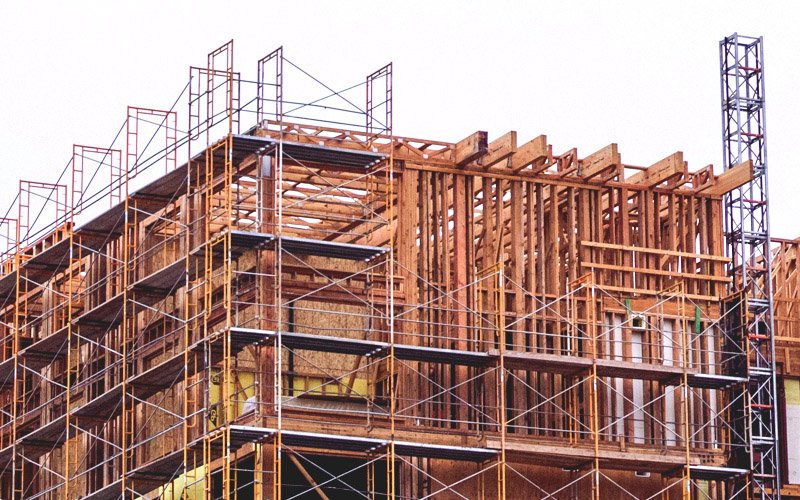
2017 Divi Lead
$19,345
The Essential Guide to Cummins DPF Delete: Benefits, Processes, and Considerations
For Cummins diesel engine owners seeking optimal performance and efficiency, understanding the diesel particulate filter (DPF) system is essential to making informed modification decisions. While these systems were designed to reduce emissions, many truck owners and operators have found that removing or modifying the DPF can provide significant performance advantages in certain applications.
In this comprehensive guide, we’ll explore the world of Cummins DPF delete options, examining the potential benefits, processes, and important considerations you should understand before making any modifications to your engine.
What you will learn:
- The purpose and function of the DPF in Cummins engines
- Common issues that lead owners to consider DPF deletion
- The potential performance and efficiency benefits of DPF removal
- The modification process and necessary components
- Complementary Cummins engine modifications
- Essential tuning considerations for optimal results
- Important legal and practical considerations
Introduction to Diesel Particulate Filter
The diesel particulate filter is a critical component in modern Cummins engines, designed to capture soot and particulate matter before they exit through the exhaust system. These filters have been standard equipment on diesel engines since the mid-2000s, when increasingly stringent emissions regulations required manufacturers to reduce particulate emissions by up to 90%.
In Cummins engines, the DPF system works by forcing exhaust gases through a honeycomb-structured ceramic filter that traps soot particles. As these particles accumulate, the filter eventually requires cleaning through a process called regeneration, which burns off the trapped particulates at extremely high temperatures.
While effective at reducing emissions, the DPF system adds complexity to the engine and can impact performance in several ways:
- Increased back pressure in the exhaust system
- Reduced fuel efficiency during regeneration cycles
- Additional maintenance requirements
- Potential for system failures that can be costly to repair
For many Cummins owners who use their vehicles for heavy-duty applications like towing, hauling, or off-road use, these drawbacks can become significant enough to consider DPF deletion options.
Understanding Cummins DPF
Cummins engines utilize sophisticated DPF systems that require specific maintenance protocols and can present unique challenges for heavy-duty applications. The regeneration process in Cummins engines typically occurs every 300-500 miles depending on usage patterns, consuming additional fuel and temporarily reducing power during the cleaning cycle.
The typical Cummins DPF system includes several components:
- The diesel particulate filter itself
- Pressure and temperature sensors
- Dosing system for regeneration fluid
- Control module that manages the regeneration process
When functioning properly, this system effectively reduces harmful emissions. However, Cummins owners frequently report several common issues:
- Clogged filters requiring premature replacement
- Failed sensors triggering check engine lights
- Incomplete regeneration cycles
- Reduced engine performance and throttle response
- Decreased fuel economy by up to 5-7%
These issues become particularly problematic for trucks used in demanding applications or environments where the regeneration cycle might be interrupted frequently or where the engine rarely reaches optimal operating temperature.
For example, a Cummins ISX engine in a truck primarily used for short-haul operations may never properly complete regeneration cycles, leading to accelerated DPF clogging and potential system failures.
Benefits of Delete Kit Installation
Installing a DPF delete kit on a Cummins engine can yield several significant performance advantages, though these benefits must be weighed against other important factors.
The primary benefits reported by Cummins owners who have completed a DPF delete include:
Improved Fuel Efficiency
Many operators report fuel economy improvements of 2-5 MPG after DPF deletion. This occurs because:
- The engine no longer needs extra fuel for regeneration cycles
- Exhaust flow is less restricted, reducing back pressure
- The engine can operate more efficiently without the additional load
For long-haul truckers or heavy equipment operators, this fuel savings can translate to thousands of dollars annually.
Enhanced Engine Performance
Without the restriction of the DPF system, Cummins engines typically experience:
- Increased horsepower (often 30-50+ HP depending on the engine model)
- Improved torque delivery, particularly in the mid-range
- More responsive throttle behavior
- Reduced turbo lag
- Lower exhaust gas temperatures under load
These performance improvements are especially noticeable in high-demand situations like climbing grades or hauling heavy loads.
Extended Engine Life
By eliminating one of the more complex systems on modern diesel engines, many owners report:
- Reduced strain on the engine
- Lower operating temperatures
- Less wear on turbocharger components
- Fewer potential failure points
- Reduced risk of engine damage from oil dilution during regeneration
Reduced Maintenance Costs
The simplification of the exhaust system typically results in:
- Elimination of costly DPF cleaning or replacement
- No need for diesel exhaust fluid (DEF)
- Fewer sensor-related issues and check engine lights
- Reduced downtime for repairs
For commercial operators, the reduction in maintenance costs and downtime can represent significant savings over the life of the vehicle.
Service Title
Lorem ipsum dolor sit amet, consectetur adipiscing elit. Phasell sed nibh dignissim, cursus tellus sit amet, ultrices mauris. Aliquam
Service Title
Lorem ipsum dolor sit amet, consectetur adipiscing elit. Phasell sed nibh dignissim, cursus tellus sit amet, ultrices mauris. Aliquam
Service Title
Lorem ipsum dolor sit amet, consectetur adipiscing elit. Phasell sed nibh dignissim, cursus tellus sit amet, ultrices mauris. Aliquam
Service Title
Lorem ipsum dolor sit amet, consectetur adipiscing elit. Phasell sed nibh dignissim, cursus tellus sit amet, ultrices mauris. Aliquam
Service Title
Lorem ipsum dolor sit amet, consectetur adipiscing elit. Phasell sed nibh dignissim, cursus tellus sit amet, ultrices mauris. Aliquam
Service Title
Lorem ipsum dolor sit amet, consectetur adipiscing elit. Phasell sed nibh dignissim, cursus tellus sit amet, ultrices mauris. Aliquam

Cummins ECM Tuning
Cummins ECM (Engine Control Module) tuning is a crucial step in optimizing engine performance, especially after modifications like a DPF delete. The ECM is the brain of the engine, controlling fuel injection, turbo boost, timing, and emissions systems. When the DPF is removed, the ECM must be reprogrammed to adjust for the absence of the filter and to prevent error codes or limp modes.
Tuning involves uploading new software or calibration files that modify engine parameters to improve power, torque, fuel economy, and overall drivability. This process requires specialized diagnostic tools and software, such as the Nexiq USB Link, which enables communication between a computer and the Cummins ECM for reading and writing data.
Proper ECM tuning ensures that the engine runs smoothly without the DPF, avoids triggering error codes related to missing emissions components, and protects engine components by maintaining safe operating conditions. Additionally, tuning can optimize throttle response, turbocharger performance, and fuel delivery to maximize the benefits of the delete kit.
Experienced tuners often perform inline data monitoring during the tuning process to gather real-time information on engine performance, exhaust temperatures, and sensor readings. This data helps fine-tune the ECM settings to match the specific engine model, operating conditions, and any additional modifications installed.
It is important to purchase tuning services or software from reputable companies to avoid issues with faulty tunes that could lead to engine damage or reduced reliability. Many shops offer custom tuning packages tailored to individual Cummins engines and usage requirements, providing detailed tuning words and parameters that enhance engine life and performance.
In summary, Cummins ECM tuning is an indispensable part of the DPF delete process, playing a key role in unlocking the full potential of your engine while protecting its components and ensuring operational reliability.
DPF Delete Process
The process of removing a DPF from a Cummins engine involves several critical steps and requires specialized equipment and knowledge to ensure optimal results. While the specific procedure may vary slightly depending on the engine model, most Cummins DPF delete kits include similar components and installation approaches.
Components of a DPF Delete Kit
A comprehensive Cummins DPF delete kit typically includes:
- Delete pipe or straight pipe to replace the DPF section
- Gaskets and clamps for proper installation
- EGR blocking plate (if performing a combined EGR/DPF delete)
- Engine tuner or programmer to modify engine parameters
- Wiring harness modifications if necessary
Higher-quality kits use mandrel-bent stainless steel pipes that maintain consistent diameter throughout, optimizing exhaust flow and durability.
Installation Process
The basic installation process includes:
- Disconnecting the battery to reset the engine control module
- Removing the existing exhaust components, including the DPF
- Disconnecting related sensors and electrical connections
- Installing the delete pipe in place of the DPF
- Addressing any EGR modifications if applicable
- Reconnecting appropriate sensors or installing sensor simulators
- Uploading new tuning parameters to the engine control module
The physical installation typically takes 3-5 hours depending on the specific engine configuration and the installer’s experience level.
Importance of Proper Tuning
Perhaps the most critical aspect of a successful DPF delete is the reprogramming of the engine control module. Without proper tuning, the engine will:
- Trigger check engine lights
- Enter limp mode
- Attempt to regenerate a non-existent DPF
- Run inefficiently or potentially damage components
Professional tuning ensures that:
- All DPF-related parameters are properly adjusted
- Fuel timing and quantity are optimized for the new configuration
- Boost pressure is managed appropriately
- Engine protection parameters remain intact
Most experienced installers recommend custom tuning rather than off-the-shelf tunes to address the specific characteristics and condition of individual engines.
Cummins Engine Modification Options
Beyond DPF deletion, Cummins engine owners have several complementary modification options to further enhance performance and efficiency. These modifications often work synergistically with DPF deletion to maximize the benefits to your engine.
EGR System Modifications
The Exhaust Gas Recirculation (EGR) system works alongside the DPF and often presents similar challenges. Many Cummins owners choose to modify or delete the EGR system simultaneously with the DPF for several reasons:
- Eliminates carbon buildup on intake components
- Reduces intake air temperatures
- Prevents oil contamination from recirculated exhaust
- Simplifies the overall engine system
An EGR delete typically involves blocking off the EGR valve and reprogramming the engine control module to prevent fault codes.
Turbocharger Upgrades
With the improved exhaust flow from a DPF delete, many Cummins engines can benefit from turbocharger modifications:
- Larger turbochargers for increased airflow and power
- Variable geometry turbo (VGT) modifications for improved response
- Wastegate adjustments for better boost control
These upgrades can capitalize on the reduced exhaust restriction, allowing the engine to breathe more efficiently and produce more power.
Exhaust System Improvements
A complete exhaust system upgrade often complements a DPF delete:
- Larger diameter exhaust piping (4” or 5” systems are common)
- High-flow mufflers that maintain sound control while reducing restriction
- Upgraded exhaust manifolds for better scavenging
These modifications create a comprehensive exhaust system that maximizes flow from the turbocharger all the way to the tailpipe.
Fuel System Enhancements
For those seeking maximum performance, fuel system upgrades complement a DPF delete:
- Larger injectors for increased fuel delivery
- Enhanced fuel pumps for higher pressure and volume
- Fuel system tuning to optimize delivery timing and quantity
These modifications should be approached carefully, as they can significantly impact engine longevity if not properly implemented and tuned.
Performance and Tuning
Proper engine tuning is perhaps the most critical aspect of a successful DPF delete installation, directly impacting both performance and reliability. A well-executed tune ensures that all engine systems work harmoniously without the emissions components while maintaining appropriate protection parameters.
The Tuning Process
Professional tuning for a Cummins engine after DPF deletion typically includes:
- Removing all DPF-related parameters from the ECM
- Adjusting fuel timing and quantity maps
- Optimizing turbocharger boost pressure
- Modifying torque management parameters
- Calibrating transmission shift points (if applicable)
- Setting appropriate temperature thresholds and protections
This process requires specialized equipment and software that can access the Cummins engine control module, as well as extensive knowledge of engine management systems.
Performance Expectations
With proper tuning after a DPF delete, Cummins engine owners typically report:
- Horsepower increases of 30-150 HP depending on the engine and other modifications
- Torque improvements of 50-300 lb-ft
- Fuel economy gains of 2-5 MPG
- Improved throttle response and reduced turbo lag
- More consistent power delivery under varying conditions
These gains are most noticeable in demanding situations like towing heavy loads, climbing grades, or operating in high-altitude environments.
Custom vs. Off-The-Shelf Tunes
Cummins owners have two primary options for engine tuning after a DPF delete:
Custom tuning involves working with a skilled tuner who develops a calibration specifically for your engine, considering:
- Exact engine specifications and condition
- Additional modifications present
- Specific usage requirements
- Desired balance of performance, economy, and reliability
Pre-packaged tunes offer a more affordable alternative but may not account for the unique characteristics of individual engines or specific modification combinations.
Most serious Cummins enthusiasts opt for custom tuning to maximize the benefits of their modifications while ensuring appropriate safety margins.
Conclusion and Final Considerations
Understanding the full scope of what a Cummins DPF delete entails allows engine owners to make informed decisions that align with their performance goals and usage requirements. While the performance, efficiency, and reliability benefits can be substantial, they must be weighed against several important considerations.
Legal and Warranty Implications
It’s essential to understand that DPF deletion:
- Is not legal for on-highway use in most jurisdictions
- Will void manufacturer’s warranty coverage for affected components
- May create compliance issues for commercial vehicles subject to inspection
These modifications are typically best suited for off-road applications, racing vehicles, or in areas where emissions testing is not required for the specific vehicle class.
Finding Qualified Professionals
If you decide to proceed with modifications, working with reputable professionals is critical:
- Seek experienced diesel specialists with specific Cummins knowledge
- Request references or examples of previous work
- Ensure they offer appropriate tuning expertise
- Discuss warranty coverage for their work and components
Long-Term Maintenance Considerations
Modified Cummins engines require a different maintenance approach:
- More frequent oil analysis to monitor engine health
- Attention to exhaust gas temperatures during heavy operation
- Regular inspection of exhaust components and mounting hardware
- Periodic review and updates to engine tuning as needed
With proper installation, tuning, and maintenance, a modified Cummins engine can deliver years of reliable service with enhanced performance and efficiency. The key is approaching these modifications with thorough research and realistic expectations.
Whether you’re seeking improved performance, better fuel economy, or extended engine life, a properly executed Cummins DPF delete can deliver significant benefits when approached with the right knowledge and preparation. Consult with a reputable diesel performance specialist to evaluate your specific Cummins engine and determine the most appropriate modification approach for your needs.
Get In Touch
(888) 123-4562
Location
2345 Divi St
San Francisco, CA 94222
info@diviauto.com
Open Hours
Mon:10am – 5pm
Tue: 10am – 5pm
Wed: Closed
Thur: 10am – 5pm
Fri: 10am – 3pm
Sat: 10am – 3pm
Sun: Closed


